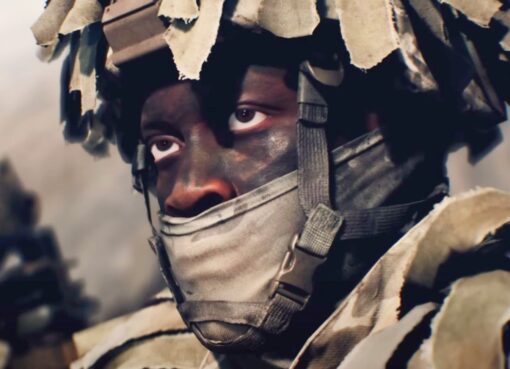That’s because they point to the continuation of a downtrend or the reversal of an uptrend. Bullish and bearish Pennants look very similar to Ascending and Descending triangle patterns respectively. The main difference is that the Pennants are formed in strong, fast moving trends.
Understanding Triangle Patterns:
This article makes use of line chart illustrations to present the three triangle chart patterns. Traders ought to familiarize themselves with the three technical analysis charts and figure out which one suits them best, although, most prefer using forex candlestick charts. An ascending triangle is a type of triangle chart pattern that occurs when there is a resistance level and a slope of higher lows. By using the Ichimoku cloud in trending environments, a trader is often able to capture much of the trend. In an upward or downward trend, such as can be seen in below, there are several possibilities for multiple entries (pyramid trading) or trailing stop levels. Keep in mind that in order to trade the pattern profitably, you should wait for the breakout.
Breakout Strategy:
Traders use various tools and patterns to predict price movements and make informed trading decisions. One such pattern that traders often rely on is the triangle pattern. Triangle patterns are formed when the price of a currency pair moves within the boundaries of two converging trend lines. These patterns are significant as they provide valuable insights into potential breakouts and trend reversals.
Descending Triangle Pattern
- The majority of the calculation takes place from the beginning of the pattern all the way up until the breakout, but not until the pinnacle.
- The lower line is a support level in which the price cannot seem to break.
- The difference between the symmetrical and the other triangle patterns is that the symmetrical triangle is a neutral pattern and does not lean in any direction.
- Traders use triangles to highlight when the narrowing of a stock or security’s trading range after a downtrend or uptrend occurs.
- In the world of forex trading, there are various chart patterns that traders use to identify potential trends and make informed trading decisions.
What’s more, triangles are very common and they are easy to spot on the charts. On the downside, triangles are purely technical, they do not incorporate fundamentals in their analysis. Which is why it is important to keep an eye on the economic calendar. Upcoming economic events such as interest rate announcements, CPI numbers, inflation, unemployment, trade deficits, political turmoils and so on can jeopardize your trades.
Risks of Crypto Trading
In most cases, the formation of the ascending triangle patterns takes between one and two months. Technical analysis is a type of trading strategy where traders analyze markets and make predictions about future market movements based on past performance. This trading strategy uses tools and techniques to evaluate historical data, including asset prices and trading volumes, rather than business results. Some of the tools used include charts and graphs, including triangles and candlesticks. Some traders manage to trade triangles profitably, while others fail to do so. If you can reduce trading false breakouts and take the advantage of high rewards, trading triangles can become profitable for you.
A symmetrical triangle is formed when the price fluctuates between converging trendlines, creating higher lows and lower highs. The pattern does not favor a specific direction and is considered neutral until a breakout occurs. Volume analysis can also provide valuable insights when trading triangle patterns. An increase in volume during a breakout can confirm the validity of the breakout and suggest strong market participation. Traders should look for an increase in volume when the price breaks out of a triangle pattern, as it can indicate the beginning of a new trend.
Traders should watch for a volume spike and at least two closes beyond the trendline to confirm the break is valid and not a head fake. Symmetrical triangles tend to be continuation break patterns, which means they tend to break in the direction of the initial move before the triangle forms. So if an uptrend precedes a symmetrical triangle, traders would expect the price to break to the upside. The wedge pattern is similar to the triangle pattern, but with trend lines that are not converging at a fixed point. It can be either a rising wedge or a falling wedge, depending on the direction of the trend lines.
Expert analysts will provide you with appropriate risk management strategies, so you don’t make the top forex mistakes like every trader. A reversal such as this one has the potential to result in significant returns if the move occurs in the underlying trend’s intended direction. When traded in the direction of the prevailing trend in the broad market, symmetrical triangles produce the highest returns for investors. A descending triangle is an inverted version of the ascending triangle and is considered a breakdown pattern. The lower trendline should be horizontal, connecting near identical lows.
Traders are constantly searching for patterns and indicators that can help them make informed trading decisions. One such pattern that has gained popularity among forex traders is the triangle pattern. In this comprehensive forex triangle patterns guide, we will explore what the triangle pattern is, how to identify it, and how to trade it effectively. Leading on from the existing uptrend, there is a period of consolidation that forms the ascending triangle.
For this reason, candlestick patterns are a useful tool for gauging price movements on all time frames. While there are many candlestick patterns, there is one which is particularly useful in forex trading. Forex signals are a great way to get profitable trades, even if you don’t know how to analyze chart patterns yet.
Forex chart patterns, which include the head and shoulders as well as triangles, provide entries, stops and profit targets in a pattern that can be easily seen. The engulfing candlestick pattern provides insight into trend reversal and potential participation in that trend with a defined entry and stop level. A triangle pattern is a chart formation that occurs when the price of an asset consolidates between two converging trendlines. It is called a triangle pattern because it resembles a triangle, with the two trendlines representing the upper and lower sides of the triangle.
As you have seen previously, the triangle formations are only genuine if the price makes several trips back and forth between the two trend lines. The volume will be rather modest for the most part shortly before the breakout, but then it will erupt during the activity that follows. You shouldn’t disregard a breakout just because of the volume activity, as we covered when we were talking about rising triangles before.
For example, if the breakout takes place at the resistance level, there is a chance that the price will continue to go upwards. The Descending Triangle is a breakdown pattern that forms when the price falls behind the support level. The triangle identifies that the sellers are gaining ground against the buyers. The formation may occasionally result in no breakout, which then leads to actions that are unremarkable. The fact that a broken pattern offers a greater outcome than the original breakout deal is an intriguing add-on to this pattern that may be used in trading. Ascending triangles tend to be bullish as they indicate the continuation of an upward trend.




Comment here